The great outdoors is awe-inspiring, provides a respite from urban hustle and bustle, and gives endless opportunities for adventure and discovery. However, the great outdoors can also be terrifying – and nothing seems to embody this fear more than bears.
Let’s be clear: most of these bear fears are completely unfounded. You are more likely to be killed by a dog or swarm of bees than a bear. However – just like with any other aspect of the great outdoors – the key to staying safe around bears to is to be educated and prepared.
Here we will go over the most crucial elements of bear safety, including what behaviors put you at risk, how to avoid bear encounters and what to do if you are attacked.
Jump to:
- Understanding Bears
- Bear Attack Statistics
- Avoiding Bear Encounters
- If You See a Bear
- Bear Charges and Attacks
- Self-Defense Against Bears
Understanding Bears
There are 8 different species of bears in the world. However, only two of these are located in the lower 48 states: Ursus americanus (brown bears) and Ursus arctos (brown bears).
It’s important that you understand the difference between these types of bears because, depending on the type, you should react differently during an encounter.
Note: Despite their names, both black and brown bears can have fur ranging from blonde to dark black. You can’t identify a bear based on color alone! The best way to ID a bear from afar is by the shoulder hump: brown bears have a hump and black bears do not.
Black Bears (Ursus americanus)
Behavior:
Brown bears are known for being timid and shy. They are easily scared away with noise and rarely aggressive towards humans.
Habitat:
Black bears are highly adaptable and can be found in a variety of habitats across North America, including forests, mountains, swamps, and even some arid regions.
Image credit: Ursus americanus IUCN range map extant and extirpated.png, CC BY-SA 3.0
Numbers:
There are approximately 750,000 black bears living in North America. Most of these are in Canada and Alaska, though there are sizable populations in parts of the lower 48 states. This means that there is a good chance of encountering a black bear when outdoors.
States with the most black bears:
- Alaska: 100,000
- California: 30,000-40,000
- Oregon: 25,000-30,000
- Maine: 24,000-36,000
- Wisconsin: 24,000
- Idaho: 20,000-30,000
- Virginia: 18,000-20,000
- Colorado: 17,000-20,000
- North Carolina: 15,000-20,000
- Montana: 13,000-17,000
- Minnesota: 12,000-15,000
- West Virginia: 12,000-14,000
Appearance:
- Color: varies from blond to black
- No distinctive shoulder hump.
- Butt:Is higher than its shoulders.
- Face: Profile is straight
- Ears: Tall and fairly pointy
- Front claws: 1-2 inches long and curved
Brown Bears
Behavior:
While brown bears are also shy, they are notoriously more aggressive than black bears. When they feel threatened, they are more likely to make a bluff attack than run away. They can be aggressive, especially when cubs are nearby.
Habitat:
In North America, brown bears are mostly found in Canada and Alaska. There are also some brown bears found in the lower 48 states. They are mainly found in the following ecosystems:
- Greater Yellowstone National Park
- Northern Continental Divide
- Cabinet-Yaak Ecosystem
- Selkirk
Numbers:
There are approximately 55,000 brown bears in North America. Most of these are found in Alaska and Canada. In the lower 48 states, there are only approximately 1,900 brown bears.
Most of these are found in the Northern Continental Divide (approximately 1,070 individuals) and Yellowstone area (approximately 730).
Appearance:
- Color: Varies from blonde to black.
- Noticeable shoulder hump
- Butt: Is lower than shoulder hump.
- Face: Profile is flatter
- Ears:Short and rounded.
- Front claws: 2-4 inches long and are slightly curved. Claw marks are usually visible in tracks.
Brown Bears vs. Grizzly Bears
There are numerous subspecies of brown bears which are found in North America, Europe and Asia. The subspecies found in the lower 48 United States is Ursus arctos horribilis, better known as a grizzly bear.
So, all grizzly bears are brown bears but not all brown bears are grizzlies.
What Time Are Bears Most Active?
Black and brown bears in the lower 48 states are mostly crepuscular, meaning that they are more active at dawn and dusk. You should avoid hiking in bear country during the very early morning and make sure you finish your hike well before dusk.
However, what time bears are most active varies depending on the season and amount of food available. For example, bears will usually nap during the day during the hot summer months but may search for food during daytime in fall when they need to consume extra calories in preparation for hibernation.
Bear Seasons
Bears hibernate or den during the cold months when food is scarce. It varies depending on the region, but is usually from November to March. It is unlikely you will encounter a bear during these seasons.
In early spring when bears awake from hibernation, they are very hungry and start seeking food. Bears during this period can be very aggressive. You will want to take extra precautions during this period!
Bears are particularly active during the summer and fall months when they need to consume huge amounts of food to prepare for hibernation. A pregnant female grizzly can consume as much as 90lbs of food per day in fall. The lower temperatures mean that the bears can continue eating throughout the day, so you are more likely to encounter a bear in the months of September and October.
Fun fact: Bears are the only North American mammal that gives birth during the brutal cold months of January and February!
Food Conditioned Bears
Bears are generally shy creates and will avoid contact with humans. However, there is an exception to this: food conditioned bears.
A food conditioned bear is one that has had contact with humans and was “rewarded” with food. As a result, the bears will actively seek out humans, such as coming to campgrounds. This is dangerous for both humans and the bear.
According to biologist John Hechtel of the Alaska Department of Fish and Game, 95% of food conditioned bears will eventually become nuisances and have to be killed. That’s where the phrase a “A fed bear is a dead bear” comes from.
Food-conditioned bears are often found in areas with:
- Many human visitors
- Lots of human food (such as at campgrounds)
- Large populations of bears
(Sources: 1, 2, 3, 4, 5, 6, 7, 8, 9, 10, 11)
Bear Attack Statistics
The chances of a fatal bear attack are relatively low. Since 2000, there was an average of one fatality per year in the lower 48 states. In all of North America, including Alaska and Canada, there were approximately three fatal bear attacks annually. These numbers align with historical trends dating back to the 1900s.
When it comes to non-fatal bear attacks, the risk is also low. The 1970s was the peak of peak of human–bear conflict with dozens of injuries yearly occurring in Yosemite, King’s Canyon, and Sequoia Parks alone. Aggressive bear management techniques in the parks, such as reducing human food sources and relocating problematic bears, reduced the number of attacks.
While the numbers still aren’t as high as in the 1970s, there has been a noteworthy increase in non-fatal bear attacks in recent years. In the period from 2000 to 2017, there were 210 non-fatal black bear attacks in the lower 48 states.
This increase in bear attacks can be attributed to several factors, including:
- Growing number of people engaging in outdoor activities in bear-populated areas
- Successful conservation efforts leading to increased bear populations and expanded bear habitats
- Changes in bear behavior such as food-conditioning and habituation, partly influenced by a decline in hunting activity.
For a more specific breakdown, black bear attack statistics reveal 67 fatal incidents in North America since 1900 and 210 non-fatal attacks recorded between 2000 and 2017.
Certain states stand out in terms of frequency of black bear attacks, per human and per bear population.
States with the Most Black Bear Attacks (Per 500,000 People):
- Colorado: 13.44
- California: 9.75
- New Mexico: 9.72
- Montana: 5.89
- Idaho: 5.26
- Wyoming: 4.25
States with the Most Black Bear Attacks (Per 1,000 Bears):
- Colorado: 3.82
- New Mexico: 3.09
- Nevada: 2.50
- Arizona: 2.33
For those concerned about grizzly bear encounters, the period from 2000 to 2015 witnessed 54 non-fatal and 7 fatal attacks. These occurred in Wyoming (29 non-fatal and 5 fatal attacks), Montana (25 non-fatal and 2 fatal incidents) and Idaho (8 non-fatal attacks and no fatal attacks).
So, while bear attacks are not common, you should still be cautious.
Data Table Source: https://digitalcommons.usu.edu/hwi/vol15/iss1/23/, CC BY 4.0 License. Other sources: 12, 13, 14, 15, 16, 17)
Avoiding Bear Encounters
The best way to stay safe around bears is to avoid seeing them. The good news is that avoiding bears is usually very easy since bears are shy and want to stay away from humans.
In areas with food-conditioned bears, you may need to use additional methods such as electric fencing or air horns.
For more info, read Bear Repellents: What Works and What Doesn’t.
When Hiking
- Make noise: Most bear encounters when hiking occur because the bear didn’t hear (or smell) you coming, such as if you are hiking quietly and the wind is blowing towards you. A surprised bear can be a dangerous bear, so you need to alert the bear to your presence by talking or singing as you hike.
- Don’t hike at dawn or dusk: Bears are usually crepuscular (activeat dusk and dawn), so this is the time you are most likely to encounter them.
- Stay on designated trails: Stick to well-marked paths to reduce the likelihood of surprising a bear. Avoid venturing into dense vegetation where bears might not hear your approach.
- Hike in a group: Bears are less likely to approach larger groups. Traveling with companions enhances safety and decreases the chance of surprising a bear.
- Don’t bring your dog: More than half of black bear incidences involved dogs and 40% of attacks involving dogs are severe. This is because bears can perceive dogs as a threat and attack, especially when the dogs bark or chase the bear. These attacks often end with the dog getting killed and the owner severely injured. If you must bring your dog, keep your dog leashed.
At Camp
The key to avoiding bear encounters at camp is to keep food and other scents away. For example, you will want to cook downwind from camp, dispose of dish water away from camp and store food properly, such as hanging from a tree or using a bear canister.
When camping in the backcountry, it’s important to choose a campsite away from areas where bears frequent, such as salmon trails. Ideally, you’ll set up camp in an open area where bears can see you and are less likely to be startled by your presence.
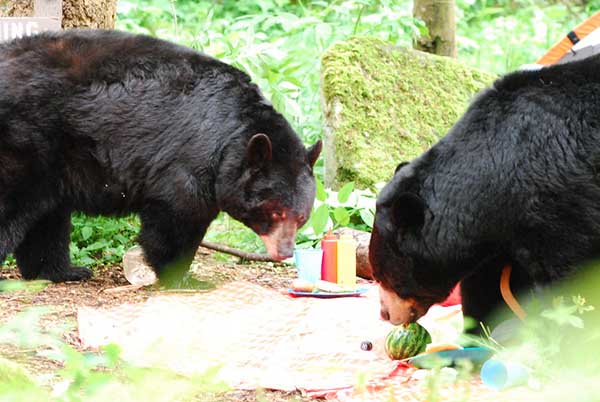
The most important thing you can do to keep bears away is keep your campsite clean and free of food!
For more info, read: How to Keep Bears Away from Campsite
What to Do If You See a Bear
If you follow the bear avoidance guidelines, it’s highly unlikely that you will see a bear. A lot of people don’t even realize that they were close to a bear because the bear ran away once alerted to human presence.
In the unlikely event that you do see a bear, here’s what to do.
The Bear Hasn’t Seen You
- Remain quiet. Don’t startle the bear by making an noise.
- Without running, slowly retreat and leave the area. Keep your eyes on the bear to see if it has any sudden changes in behavior.
- If you can’t retreat: Then wait for the bear to move on its own or make a very wide detour around the bear. Go downwind and be as quiet as possible.
If the Bear Has Seen You
- Remain Calm! Bear attacks are rare and a bear will usually move out of the way when it sees you.
- Ready Your Bear Spray. Take it from the holster and remove the safety.
- Make Yourself Look Bigger. You can do this by raising your arms over your head. If hiking in a group, bring members closer together.
- Start Talking Calmly:The idea here is to let the bear know you’ve seen it and that you aren’t a threat. Just start talking calmly. Apparently, it doesn’t matter what you say to the bear. But giving complements couldn’t hurt 🙂
- Slowly Back Away: While still talking calmly, start to slowly back away. Do not turn your back to the bear. The bear might make a bluff charge, stopping well before contact. If this happens, keep your emotions in check and don’t run. Running will just make things worse!
- Stop If the Bear Follows: You will need to stand your ground.
DO NOT:
- Absolutely DO NOT RUN. This might cause it to think you are prey and go chasing you in pursuit. There is no way you can outrun a bear.
- CLIMB A TREE:Most people know this by now, but bears are good climbers. Going up a tree might just cause the bear to chase you up the tree, trapping you there.
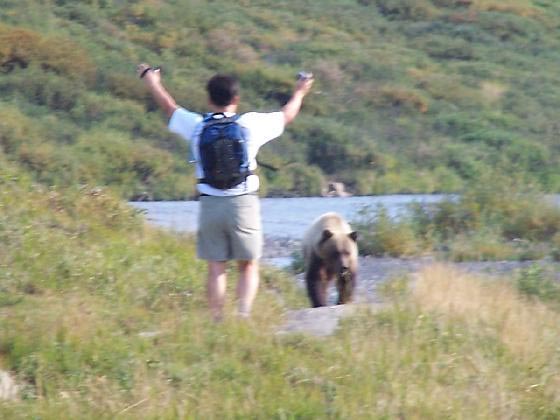
This hiker did the exact right thing: Instead of running, he waved his hands in the air and told the bear to “go away” in a firm voice. *Note that the picture was taken from a safe distance across a river! Never take a photo during a bear encounter!!!!
Bear Charges and Attacks
Most of the time, bears will not engage with humans. If you’ve been practicing smart bear avoidance techniques, you probably won’t even be aware that you were close to a bear! But, in some situations, the bear might engage. These encounters can be divided into three types:
- Charges
- Defensive attacks
- Predatory attacks
Bear Charges
If a bear feels threatened or stressed, it may charge you. Luckily, most bear charges are bluffs. The bear will bound towards you, only to veer out of the way in the last moment and retreat. It’s actually impressive how quickly such a large animal can stop and change direction!
How you react to the charge can determine the outcome. So, it’s important to know the signs a bear might charge so you can be ready.
Signs a Bear Might Charge:
- Snapping jaws
- Huffing
- Slapping the ground
- Head and ears are up and forward
- Puffs itself up to look bigger
Note: Bears sometimes may stand on their hind legs. This is not a sign of aggression. Rather, the bear is curious and standing up to get a better look at you.
What to Do If a Bear Charges:
- Don’t run. This will just cause it to chase and attack you.
- Use your bear spray. When the bear is within 25 feet, spray a warning blast of bear spray. If the bear still gets closer, spray directly into its face.
- Stand your ground. Get ready to defend yourself in case the charge is not a bluff.
Defensive Attacks
Almost all bear attacks are defensive. They occur when a bear feels threatened, such as when a bear is protecting its food or a mother is protecting her cubs.
What to Do during Defensive Bear Attacks:
- Black bear attacks: Black bears are timid. Do NOT play dead with black bears. Fight back with everything you have. Throw rocks, hit it with branches… Simply fighting back is usually enough to scare the bear away.
- Defensive brown bears attacks: If the bear is PLAY DEAD. Curl up in a ball and use your hands and arms to protect your neck and head. You may get a slapped by the brown bear, but it should go away once it realizes you are not a threat.
Predatory Attacks
In rare cases, a brown or black bear may have a predatory attack. The bear will likely stalk you quietly before attacking. If a bear is persistently following you, such as by disappearing and reappearing, it may be getting ready for a predatory attack. It won’t exhibit defensive behaviors like huffing.
If you notice a bear stalking you:
- Shout, bang pans or make other loud noises
- Stamp your feet
- Make yourself look bigger by holding up branches, poles, etc.
The point is to let the bear know you will fight back if attacked!
DO NOT PLAY DEAD in a predatory attack! You need to fight back or you will just make yourself into an easy meal.
Self-Defense Against Bears
While the chances of being attacked by a bear are low, you still need to be prepared. There are really only two options when it comes to self-defense from bears: bear spray and firearms.
Bear Spray: A Proven Defense
Research shows that bear spray is the most effective self-defense against bear attacks. In 92% of recorded incidents with brown bears and 90% of incidences with black bears, bear spray successfully averted confrontations.
Just as important, 98% of people carrying bear spray were uninjured after close encounters with bears. Those who were injured only had minor injuries.
Another study found that bear spray is even effective in deterring and stopping polar bear attacks. In more than half of those incidences, other deterrents were used unsuccessfully before bear spray was used successfully.
Read: How to Use Bear Spray
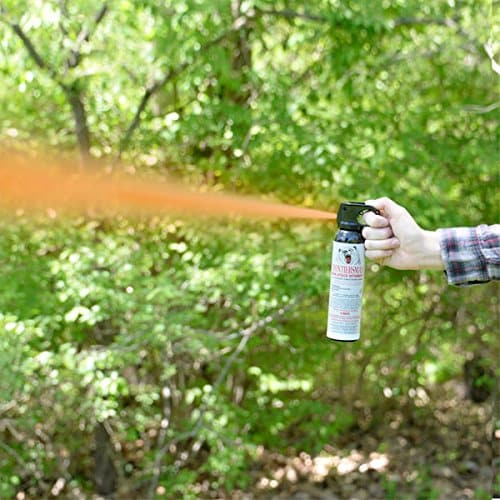
Bear spray by Frotiersman has the industry-maxium spray distance of 35 feet.
Firearms: Considerations and Caution
While firearms are legally permissible for self-defense in many state parks, their efficacy in bear encounters comes with caveats. According to research, people defending themselves with firearms against grizzlies suffer injury about 50% of the time. By contrast, those using bear spray escape injury most of the time, and when injuries occur, they tend to be less severe with shorter attack durations.
For a firearm to be effective against bears, it must be a large-caliber weapon such as a 12-gauge shotgun or a .300 mag rifle. These are unwieldy to carry outdoors. It is also difficult to reach the weapon in time and aim at a fast-charging bear.
Also note that that more people are injured by the guns they carry than by bears. This doesn’t mean that firearms can’t be a good self-defense against bears – but you need to be a skilled shooter and should also carry bear spray.
Other Self-Defense Weapons Against Bears
During a predatory attack from a bear where you don’t have bear spray or a firearm, you should fight back with whatever you have. For example, there was a case where a man fought off an attacking bear by stabbing it in the neck with his pocketknife. There was another incident where two college wrestlers fought off the bear with kicks and blows. And two thru-hikers were able to deter a bear following them by throwing rocks at it.
The bottom line? Bring bear spray but, if you have no other option, fight back with whatever you have.
Further Bear Safety Resources:
- Bear Safety Seminar Video by Bear Ecologist Dr. Tom Smith: This video does a great job of simplifying the risks and what to do if you see a bear.
- Bear Attacks: Their Causes and Avoidance: A book by Stephen Herrero, considered one of the world’s foremost experts on bear safety.
- NOLS Bear Essentials: Hiking and Camping in Bear Country: This book covers everything you need to know from identifying bears to setting up camp properly to be bear safe outdoors.
- Bearsmart.com: Lots of good advice on this website about bear safety, including statistics and research-based practices.
Image credits: “mmmm” (CC BY-NC-SA 2.0) by OnceAndFutureLaura, “Fruit!” (CC BY-NC-SA 2.0) by OnceAndFutureLaura
“Go Away, Bear!, 4 of 9” (CC BY-NC 2.0) by J. Stephen Conn


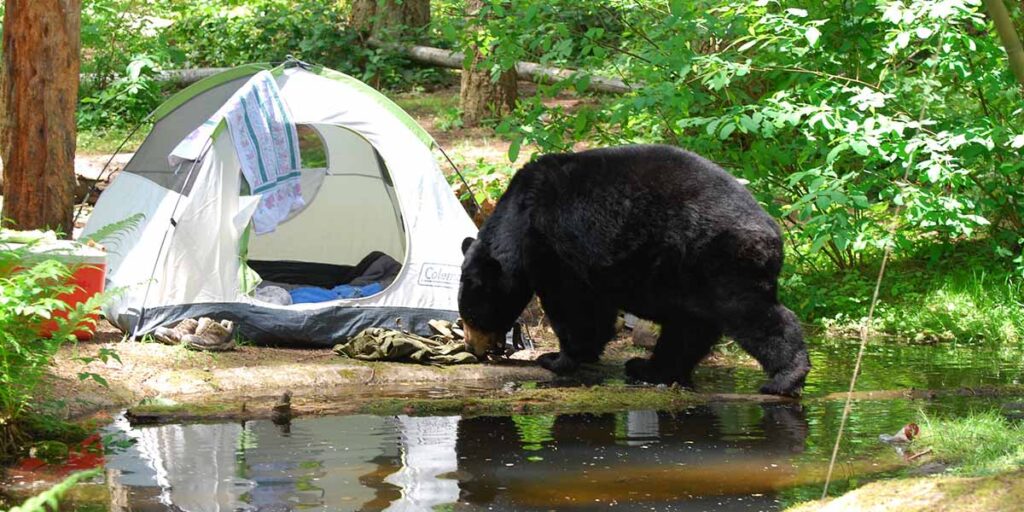
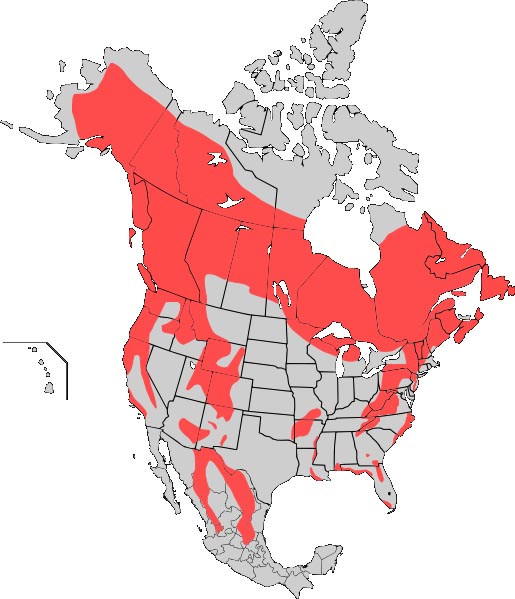
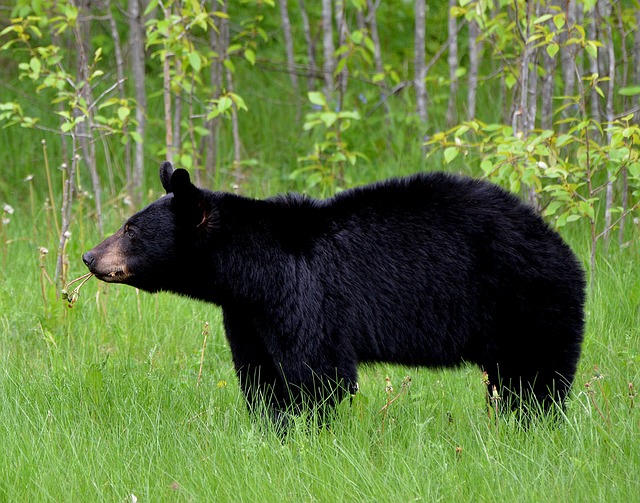
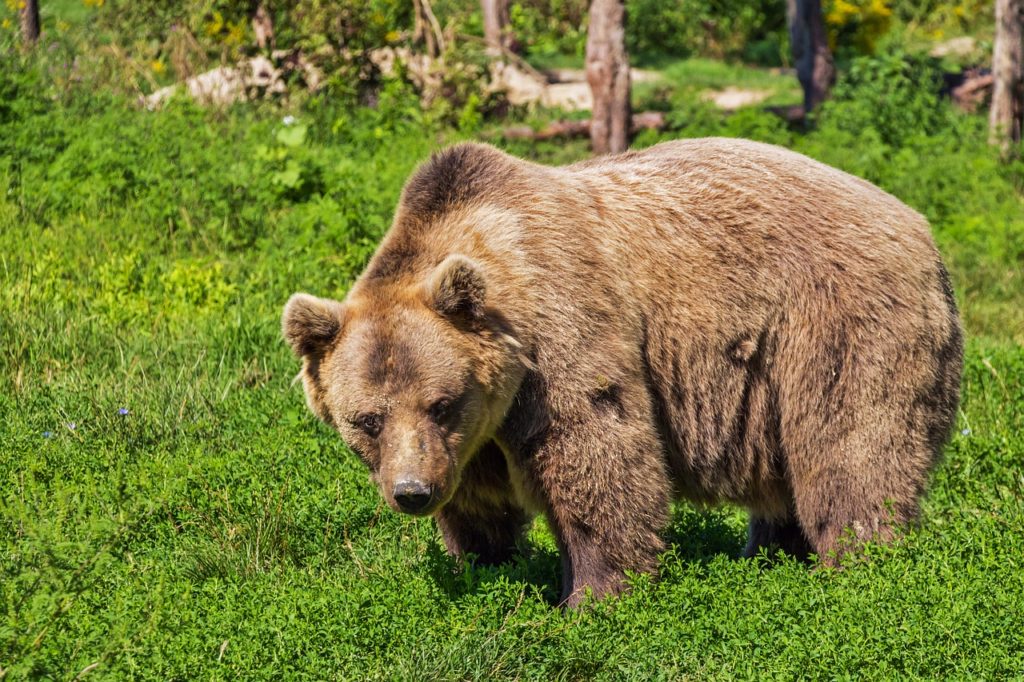
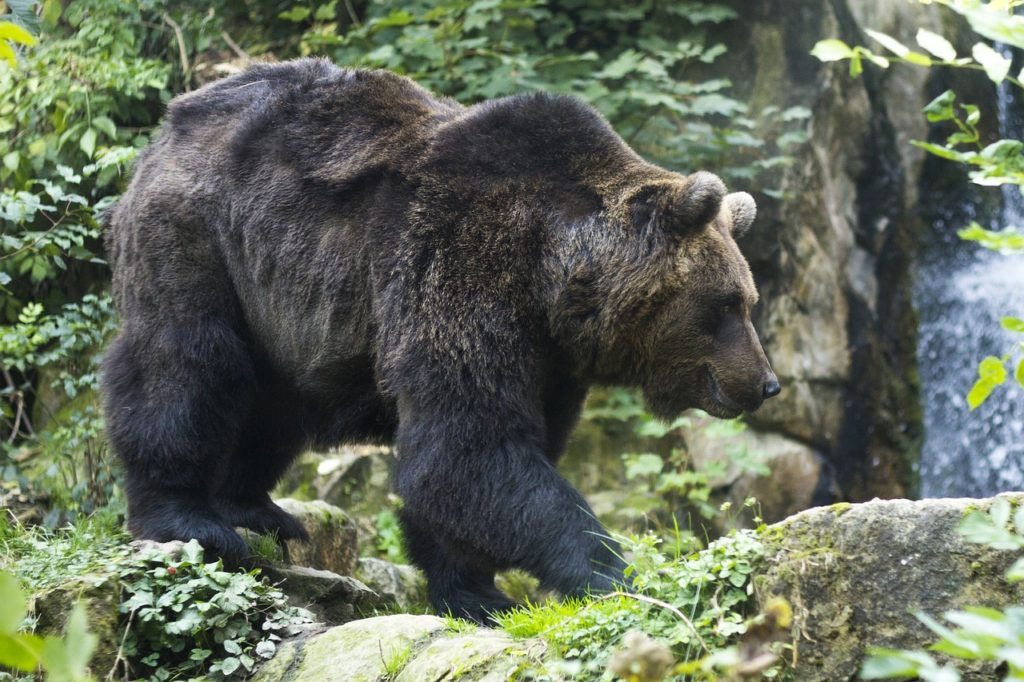
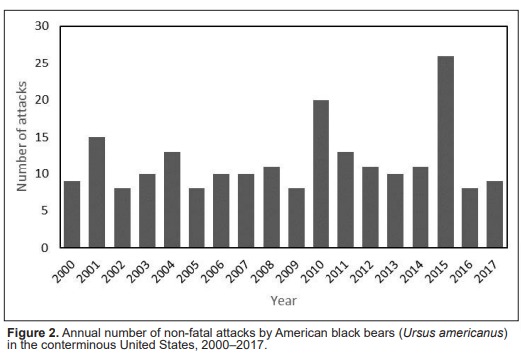
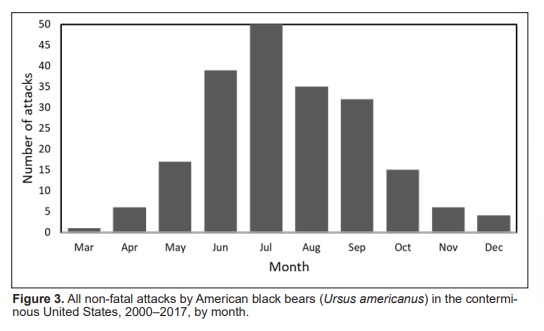

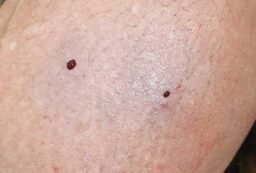








1 Comment
Rosemary huebner
March 22, 2024 at 11:24 pmWhatever you do, never have food in the tent overnight. In Utah about 13 years ago, a black bear entered for snacks and drug a young boy away causing his death.
There was lots of precise info about possible encounters!!!!!